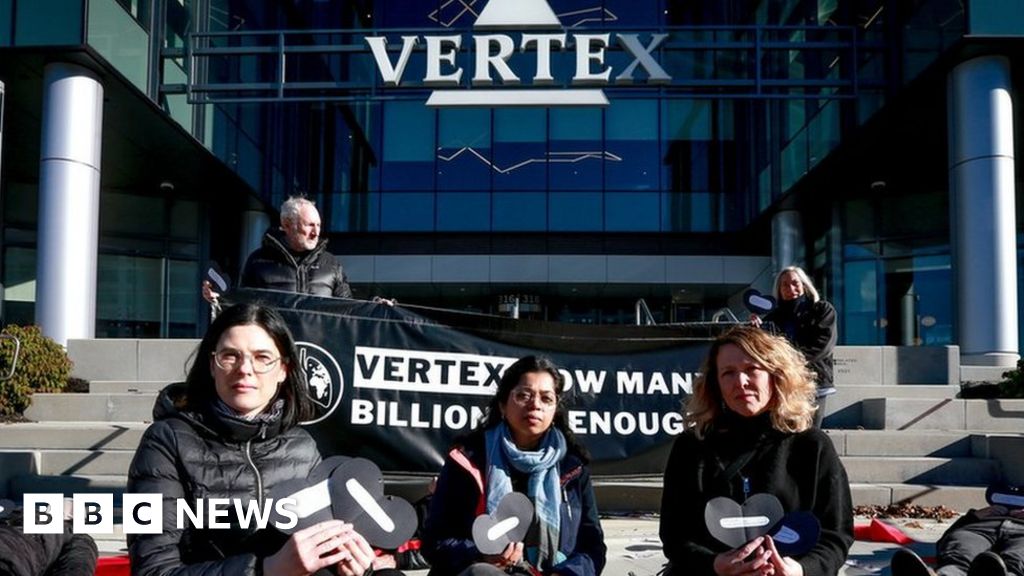If you can’t build the next Ozempic, buy it: Where M&A could be heading in the obesity drug space
Investors are contemplating where and when the next big obesity drug deal will occur. At the moment, Novo Nordisk and Eli Lilly have the growing obesity drug market all to themselves. But given the potential size of this opportunity, which some have put at more than $100 billion by 2030 , other pharmaceuticals companies — both large and small — want a piece of the action. AstraZeneca and Roche have recently jumped into the race by making acquisitions, and analysts see more deals ahead. Some have speculated, for example, that Pfizer could hedge its bets with an acquisition after suffering setbacks with two of its own experimental weight loss drugs . Pfizer still has one other drug it is working on in this category, with data expected in the first half of next year. “While the [once-daily oral] formulation may keep some hope alive for Pfizer’s obesity strategy, we think it’s increasingly apparent the company will have to look to external assets to deliver on the market opportunity it had portrayed,” wrote Barclays analyst Carter Gould in a research note earlier this month. Pfizer has said it anticipates oral GLP-1 medications will account for one-third of the market. Pfizer shares were reeling Wednesday, as investors reacted to a disappointing outlook from the company. Its stock hit a 10-year low intraday and is down about 49% year to date, with a nearly 14% drop in December alone. Ahead of the investor meeting, views of the name were mixed, with fewer than half of the analysts covering it rating it a buy. Deal activity in the space is already robust. In early November, AstraZeneca licensed ECC5004 , an oral glucagon-like peptide 1 receptor agonist being investigated by Eccogene for its use treating obesity, Type 2 diabetes and other cardiometabolic conditions. And it might not be done. Executives said they are continuing “to scan the landscape and understand what might fit best into this growing portfolio.” Roche agreed in early December to buy Carmot Therapeutics for $2.7 billion upfront , plus potential milestone payments. Carmot has been working on the development of CT-388, a weekly injection that has two incretin hormones, GLP-1 and GIP receptor agonists. In that way, it’s similar to Eli Lilly’s tirzepatide, which was recently approved to treat obesity under the brand name Zepbound. In addition to this lead asset, Carmot has two other compounds in earlier stages in this category, including an oral drug, CT-996. The likely suitors In a recent research note, Jefferies analyst Roger Song said the “short list of high potential ‘next buyer[s]'” in the GLP-1 space includes not only Pfizer, but also Amgen , Regeneron , Novartis and Novo Nordisk. “A meaningful number of large caps that have exposure to obesity and/or adjacencies could be interested in beefing up their presence,” Song wrote. “Based on our pipeline review of 24 large caps, we found that 13 large caps currently have exposure to either obesity/[type 2 diabetes] (7) or [cardiovascular]/liver/metabolic kidney (12).” Song also noted that Bristol-Myers Squibb , Sanofi , AbbVie and Biogen do not have any pipeline products in these disease areas. Deals have already been part of the equation even for category leaders Novo and Lilly. Their approach has not only been to bulk up assets that treat diabetes and obesity but also to add potential products that could be prescribed alongside Wegovy and Zepbound, their main GLP-1 treatments. For example, Lilly agreed to buy Versanis Bio for about $2 billion in July. The clinical-stage biotech has been working on treatments to protect against muscle wasting , which can occur when patients quickly lose weight. That means other companies that are designing drugs to prevent the loss of lean muscle could also be eyed for future transactions, analysts said. These companies include names like Scholar Rock and Biohaven . SRRK YTD mountain Scholar Rock stock year to date. Michael Yee, Song’s colleague at Jefferies, recently boosted his price target on Scholar Rock by $10 to $30, or about 62% above where the stock closed Tuesday. Yee said his call on the clinical-stage company was tied to the “increasing strategic value in obesity” as well as the attention being paid by large-cap pharma. Scholar Rock has a market cap of roughly $1.4 billion. Take Regeneron. Jefferies’ Song called out comments its management has made about the potential for its anti-myostatin muscle preservation technology. The company will begin a trial next year looking at its use as patients are treated for obesity. In a recent investor presentation, the company said studies on nonhuman primates showed its myostatin antibodies combined with semaglutide, the active ingredient in Novo’s Ozempic and Wegovy, produced a greater weight loss where more fat — rather than lean muscle — was lost. Regeneron shares have outperformed this year, and are up 20% year to date. The majority of analysts covering the stock rate it a buy, according to FactSet. Roche has also highlighted its own pipeline of muscle preservation therapies when it acquired Carmot this month. The potential targets Meanwhile, there remains a desire to have drugs that are as effective at weight loss as Wegovy and Zepbound, but in a pill form. Right now the two approved drugs are dispensed via a weekly injection. A pill would be easier to manufacture and would be preferred by many patients who fear injections. It also could cost less. In addition, there is ongoing research by some companies into whether adding other gut hormones will increase the drugs’ efficacy. Small- and mid-cap companies working on drugs in the GLP-1 space include Terns , Viking , Zealand Pharma and Structure Therapeutics . Analysts expect some could be acquired if their compounds show promising results. The same day that Pfizer announced plans to halt its obesity drug trial due to side effects, shares of startup Altimmune soared on progress it reported with its experimental obesity drug. Although the trial was small, about half of the participants saw at least a 15% weight loss when they took Altimmune’s drug. At certain doses, a 20% weight reduction was achieved. Other benefits such as a drop in triglycerides and LDL cholesterol were also seen. ALT 3M mountain Altimmune shares over the past three months. In the wake of the news, Altimmune CEO Vipin Garg said the company needs to strike a partnership or a deal with larger pharmaceutical company to move ahead to phase 3 clinical trials and work toward launching the drug known as pemvidutide. Even with the share gains that followed that comment, the company’s stock is down 62% this year, and it is very small, with a market value of only $330 million. According to FactSet, all of the analysts who cover the stock rate it a buy, but smaller stocks tend to be less liquid and can be a riskier bet. The average price target is $22.29, nearly 275% above where shares closed Tuesday. JMP Securities analyst Jonathan Wolleben said Altimmune shares are undervaluing its opportunity, which he puts at $5 billion in peak sales for treatment of both obesity and NASH, a liver disease. His price target of $25 is slightly higher than the Wall Street average. Wolleben has had discussions with a number of general practitioners and endocrinologists to learn more about what patients are looking for. Although a 12% weight loss is considered to be “clinically meaningful,” doctors said patients are looking for drops of as much as 18% to 20%. As more drugs are approved to treat weight loss in the coming years, doctors are discovering other associated benefits with each one. This means that doctors will look to match the patient to the drug that best fits their health needs, Wolleben said. For example, he said, some drugs may be better suited for a patient with obesity who also needs to control their blood sugar levels, while another treatment may be a better fit for someone suffering from both obesity and fatty liver disease. Understanding these profiles also may suggest which tie-ups may make the most sense. “A more nuanced interpretation of these mechanistic subgroups and target applications will allow investors to find undervalued but derisked candidates,” Wolleben wrote in a research note on Dec. 4. “Not to be lost in this segmentation, these obesity ‘niches’ are large and could support multiple blockbuster drugs in each class.” — CNBC’s Michael Bloom contributed to this report. Correction: Carmot has been working on the development of CT-388. An earlier version misstated the name of the medication.







